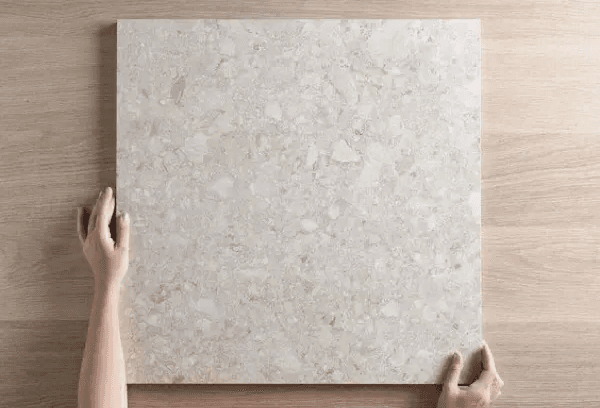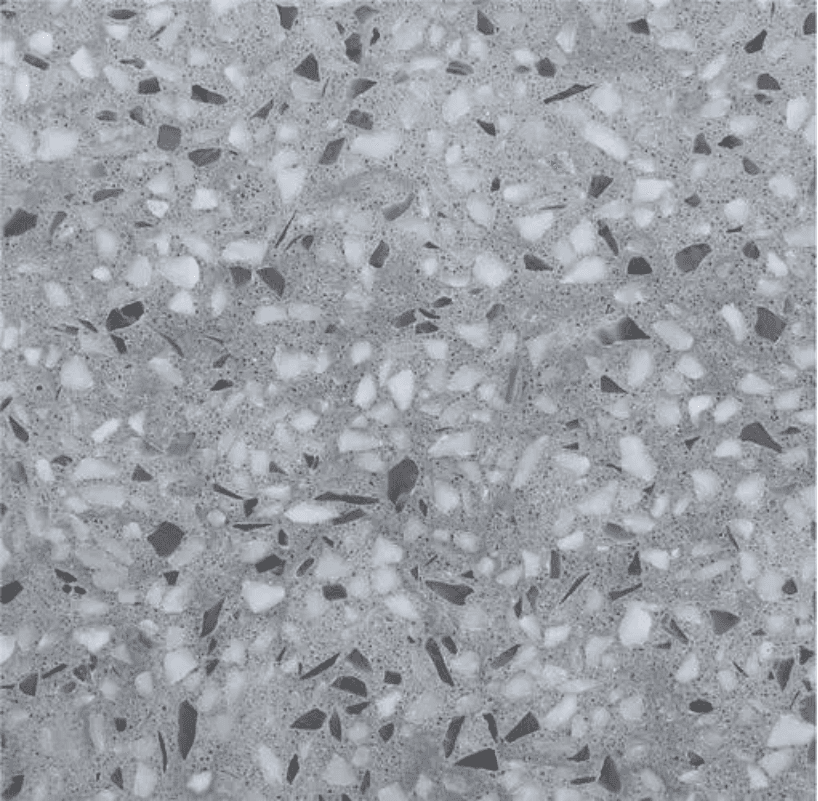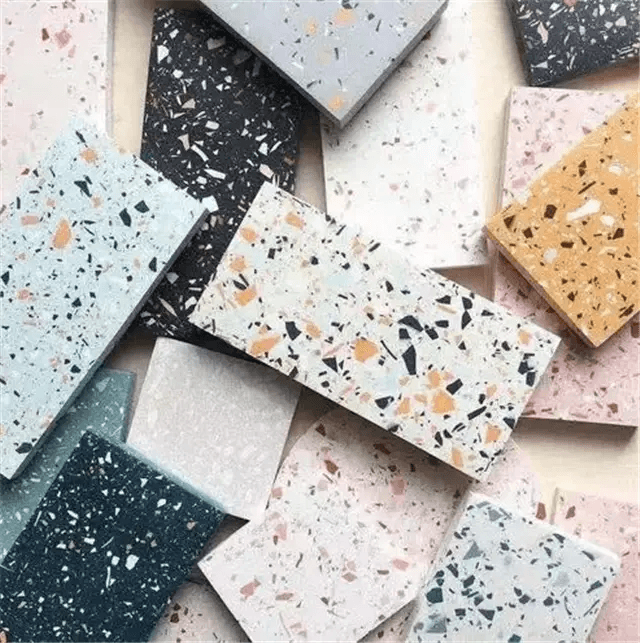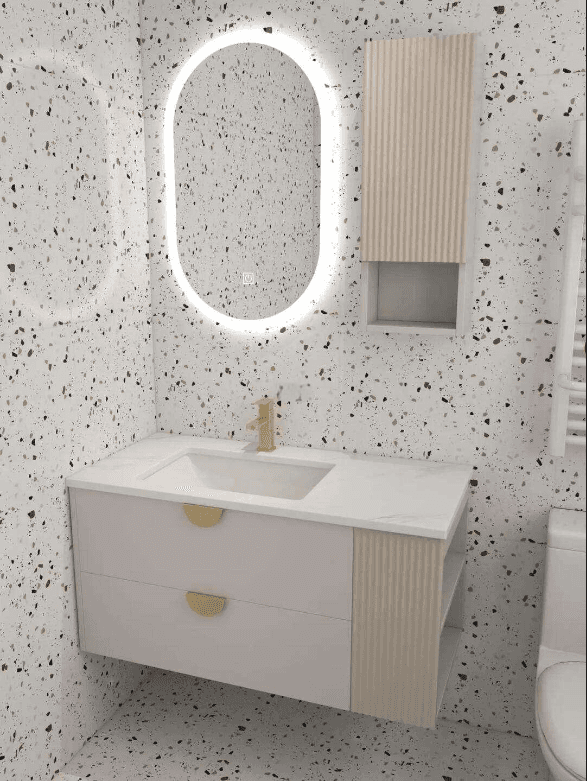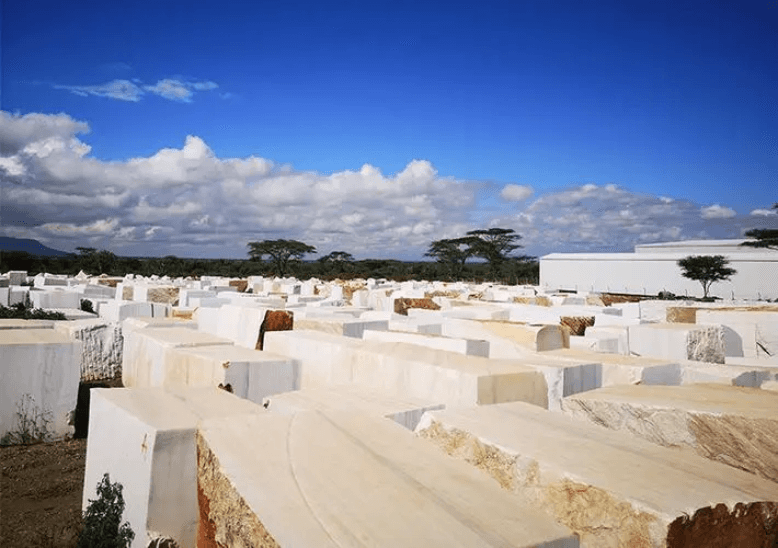Terrazzo Prefabricated Slabs: Production, Performance, and Construction Details
Lizzy
Terrazzo Prefabricated Slabs: Production, Performance, and Construction Details
Terrazzo, once a nostalgic material from the 1980s, has transformed into a symbol of luxury and fashion in modern design. Today's terrazzo prefabricated slabs are versatile, suitable for flooring, and can be crafted into various decorative items. Here's a detailed overview of terrazzo prefabricated slabs.
Production Technologies
A. Pressing Technology
A traditional method where materials are mixed and pressed, requiring a curing period post-pressing. Common sizes are 600x600mm and 800x800mm, known for their low cost.
B. Raw Material Technology
Derived from engineered stone technology, originating from Italy and now domestically produced in China. Sizes typically include 1800x2700mm, 1600x2400mm, and 1600x3200mm, with a variety of imported materials and large aggregate options, moderately priced.
C. Vacuum Stone Technology
An innovative production process using "vacuum heterogeneous polymerization" technology, without glue or resin but with about 5% resin to fill internal voids. Common sizes are 1200x2400mm, known for excellent performance, stain resistance, durability, and slightly higher pricing.
D. Ceramic Tile Technology
A mature production technique distinct from engineered stone production, offering diverse designs but with printed surface patterns, suitable for cost-effective projects.
Performance Evaluation
Water Absorption Rate
Pressing: 1.33%-3.1%
Raw Material: 0.24%-1.33%
Vacuum Stone: 0.03%-0.17%
Abrasion Resistance
Pressing: 65.8mm
Raw Material: 44.2mm
Vacuum Stone: 28.6mm
Slip Resistance
Pressing: Dry 48, Wet 8
Raw Material: Dry 50, Wet 10
Vacuum Stone: Dry 51, Wet 14
Chemical Resistance to Acid and Alkali
Pressing: Not Tested
Raw Material: Acid Resistance C1, Alkali Resistance C4
Vacuum Stone: Acid Resistance C4, Alkali Resistance C4
Bending Strength
Pressing: 10.1 MPa
Raw Material: 13.1 MPa
Vacuum Stone: 72.1 MPa
Construction Details
Substrate Preparation
Ensure the substrate is solid, smooth, free of voids, clean, and free of oil, form-release agents, dust, and loose materials.
Adhesive Selection
It is recommended to use Type II cementitious adhesive for cost-effective leveling, but be aware of potential efflorescence, especially with white terrazzo styles.
Seam Methods
Seamless: Suitable for small areas to avoid bulging.
Small seams: 1mm, more aesthetic but may lead to inconsistent repairs.
Standard seam: 2mm, most suitable for both maintenance and appearance, especially in dark colors.
Grout Materials
Use matching color grout for seamless effects; polished with terrazzo for the best results.
Dry Hanging Methods
For walls over 3 meters, dry hanging is mandatory per national standards, similar to stone cladding methods.
Conclusion
Comparing performance indicators, vacuum stone stands out as superior. Raw material technology is slightly inferior but can be enhanced post-construction. Pressing technology is average, recommended for flooring only.
This comprehensive guide to terrazzo prefabricated slabs covers production processes, performance evaluations, and essential construction details to ensure the best results in your projects.
